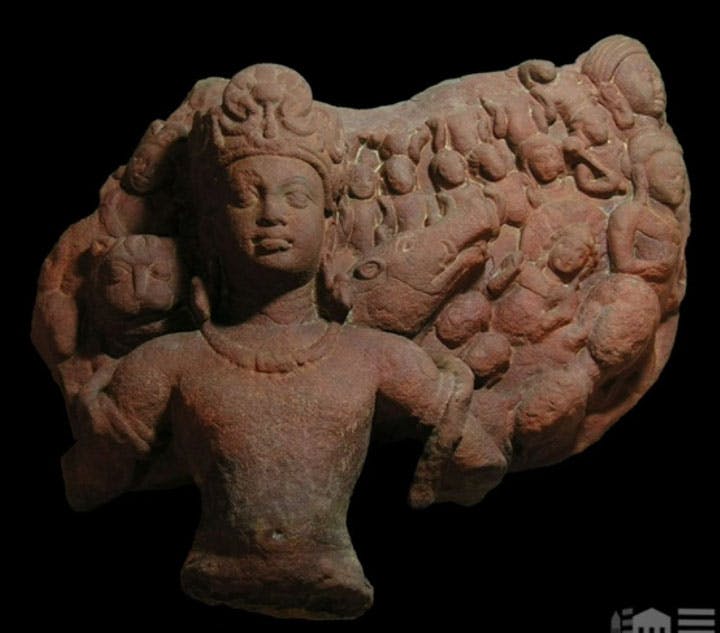- Lecture
The Dr. Ranajit K. Datta Distinguished Lecture in Indian Art

Vishvarupa (detail), c. 500. Northern India, Uttar Pradesh, Aligarh District, Bhankhri. Sandstone: h. 46 cm. Government Museu, Mathura, 42-43.2989. Photo: Pierre Baptiste
How Krishna Became Vishnu: Early Images of Krishna in India
About The Event
Two thousand years ago, artists in Mathura, in northern India, created sculptures of a four-armed male divinity in human form. While many scholars identify this figure as the Hindu god Vishnu, there are strong arguments in favor of his identity as Krishna.
Texts that emerged during this period explain that Krishna was born in Mathura as an incarnation of Vishnu. However, in art there survive no depictions of the young Krishna until much later. How was Krishna represented in art before the fourth century AD? Does his appearance differ from that of Vishnu?
In this lecture, noted scholar Charlotte Schmid examines the early formulations of Vishnu and Krishna images in northern India to better understand the relationship between the two deities and how that relationship diverges from its description in texts.
This lecture is made possible by the Dr. Ranajit K. Datta in Memory of Kiran P. and S. C. Datta Endowment Fund.
Charlotte Schmid
Charlotte Schmid is the director of research of the École française d’Extrême-Orient (French School of Asian Studies) in Paris. After working in northern India on the earliest known figurative representations of Krishna, she spent several years in Tamil-speaking southern India studying texts and inscriptions in Pondicherry. She currently leads research projects that locate and define the links between the dual cultural spaces of northern and southern India during the first millennium.